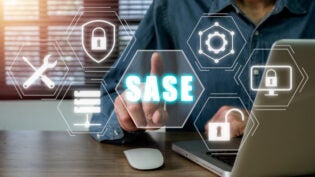
Fintechs are innovative by nature, and leading the way when it comes to digitising financial services like banking, lending and insurance. But relying on internet networks and systems comes with fintech cybersecurity risks, and falling victim to a hacking attempt can be devastating. In fact, 98% of the world’s top 100 fintech startups are vulnerable to cyber attacks, which is no small number!
Let’s focus on solutions. Here are the 3 biggest security risks facing fintechs — and the tools to prevent cyber attacks.
Risk #1: Cross-site scripting (XSS)
Fintechs aren’t alone in struggling with cross-site scripting. It’s one of the most common cyber threats across all industries, and there are a few types of attacks: Stored XSS, Reflected XSS and DOM XSS.
In a nutshell, XSS attacks “inject” malicious content into a trusted website, which is activated when a user visits the site and clicks a link. At that point, the site delivers that malicious code to their browser, known as the end-user. The script can then access any cookies or sensitive information saved by the browser and used with that site, like personal and banking details. Some sophisticated scripts can even rewrite the content on your page, which is worrying.
Usually, cyber criminals launch XSS attacks on forums, message boards and web pages that allow users to comment — but fintechs are being targeted more and more. The reason is simple: hackers want your data!
The solution:
In computer speak, the best way to prevent cross-site scripting is to “sanitize” your input and output. This is a form of filtering where your website automatically scans scripts for malicious code before letting them in. You may want to enlist the help of an IT security professional to set up a sanitation application.
It’s also a good idea to follow the best cybersecurity practices, such as rigorous coding to protect your network as well as controlling who has access to it. Your IT team should regularly look for vulnerabilities in your site and network, and quickly work on patches if they find any flaws.
As part of your cyber attack prevention plan, educate your team on basic cybersecurity. The key points are to not open suspicious emails, click suspicious links, or share credentials and other personally identifying information with unknown senders. Cybersecurity in fintech also involves setting up complex passwords and enabling multi-factor authentication (MFA) for an extra layer of security.
Risk #2: Sensitive data exposure
Since fintechs handle a lot of sensitive data on a day-to-day basis, they’re a key target for cybercriminals, who can sell it on the Dark Web. If a talented hacker gains access to one or two pieces of personally identifiable information (PPI) — like a full name, credit card number or date of birth — they can install ransomware on your client’s or vendor’s computer, or carry out identity theft.
This kind of data streamlines your operations and makes client transactions easier, so we recommend increasing your fintech cybersecurity for peace of mind.
The solution:
There are a few steps you can take to secure your data. Here’s how to protect against a data breach:
- Encrypt all personal and financial data. All data should be end-to-end encrypted, and access should be limited to the people who need that information to do their job. Most computers and smartphones have operating systems that can encrypt data and prevent unauthorised access. Otherwise, third-party cloud-based systems are also a safe option.
- Maintain two backups. It’s essential for fintechs to routinely back up their systems. That way, if you’re ever the victim of a ransomware attack or your server crashes, you’ll be able to recover lost or corrupted data and mitigate the effects. Ideally, you want to have two encrypted backups: one on an external hard drive or flash drive, and another on the cloud. The off-site backup will protect you if a disaster or outage hits the office.
- Connect to a Virtual Private Network (VPN). Many employees are working from home, which may leave your company vulnerable. To boost security, offer to set up a VPN for your remote workers to meet fintech security standards. These networks encrypt the data you send and receive and hide your IP address to keep you safe and anonymous online.
- Enforce strict policies for third-party data. In today’s business landscape, many companies sell or use third-party data. That’s fine, but it’s important to tell your clients if you plan to do this, and to give them a choice to opt out of data sharing.
Risk #3: Security misconfiguration
The other cyber threat we see all the time in fintechs security misconfiguration. In plain English, this means your applications and operating systems are out of date, making them vulnerable to hacks and fintech cyber attacks.
The solution:
Luckily, the solution is simple: install every software update as soon as it’s available! The reason why software updates pop up so often is that manufacturers release fixes for every flaw as soon as they identify them.
It’s tempting to ignore the notification, but by doing that, you’re making it easier for cybercriminals to tap into your system. Most software updates take a few minutes to install and require you to restart your computer, but trust us when we say it’s worth the effort to prevent a cyber attack.
While you’re at it, look into tightening your business’ cloud security. Most cloud services don’t offer secure encryption or authentication, and some can’t distinguish between authorised users and other people trying to access the cloud.
For maximum security, choose a cloud security software that will properly configure your cloud security so hackers can’t skip past your internal policies and access sensitive information. Plus, if your cloud security software also has a predictive security function, it will identify and address attacks before they happen.
Lastly, it’s a good idea to install a sophisticated antivirus and anti-theft software on all company devices. This will scan attachments and images for viruses and block offensive content to protect your devices from malware, ransomware and identity theft. While your employees are working from home on company devices, look into getting a remote security solution that offers a multi-layered defence against various cyberattacks to keep your business — and your data — safe.
2733 Views












